
Guest blogged by: Amol Singh
Harinder Singh Jinda and Sukhdev Singh Sukha were hanged to death in Pune Jail for the assassination of General Arun Vaidya, the architect of Operation Blue Star. In the wake of their impending hangings, Sukha and Jinda sent an open letter to the President of India in which they documented their justifications for Sikh militancy and demonstrated how their actions were placed inside a global sphere of justice and necessity.
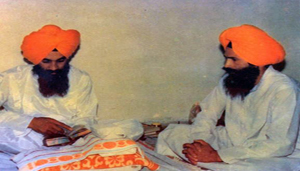 Sukha & Jinda’s letter contextualized Sikh militancy inside of a broader sphere of global defiance against outdated and arbitrary power structures.
Sukha & Jinda’s letter contextualized Sikh militancy inside of a broader sphere of global defiance against outdated and arbitrary power structures.
When nations wake up, even history begins to shiver. During such momentous moments a Banda Bahadur bids farewell to his peace-dwelling and destroys a State of oppression like Sirhind, a Che Guevera turns down a ministership of Cuba, loads a gun on his breast and entrenches against the enemies in the forest of Bolivia, a Nelson Mendela rejects the ideology of apartheid and prefers to spend his life in a dark prison cell.
 Guess what a British Asian family is hitting the reality TV scene … “Meet The Grewals” will begin filming 24/7 on November 4th in the UK. The three-generation family will be filmed for over eight weeks. Their lives will be aired as part of the iconic series, The Family, on Channel 4.
Guess what a British Asian family is hitting the reality TV scene … “Meet The Grewals” will begin filming 24/7 on November 4th in the UK. The three-generation family will be filmed for over eight weeks. Their lives will be aired as part of the iconic series, The Family, on Channel 4.
Director David Clews says: “I think the film captures both the big issues and the intimate moments of family life and I hope everyone will enjoy spending time with the Grewals in the same way I have.”
Yesterday, October 12th, was “Columbus Day” – a day where the United States government honors and celebrates the achievements of Christopher Columbus. For some in the United States, Columbus Day is just another holiday. However, for many individuals and communities – it is a painful reminder that history has forgotten the facts. Christopher Columbus was a hero to some and a villain to others. What his true legacy in the Americas is and to whose expense we celebrate his “discovery” has been called into question. In fact, this notable video below asks us to reconsider why we celebrate Columbus Day and not Indigenous People’s Day.
As you listen to the voices in this video – you may relate to the emotions and words used. As Sikhs, we also won’t allow individuals such as KPS Gill to be named a hero and as humanitarians we won’t perpetuate the heroic notions of Gandhi. Heinous crimes were committed and rights were violated and yet these individuals are still celebrated for their achievements. “With all due respect,” while India [or the U.S.] goes on remembering these so-called heroes, voices in the diaspora ask you to reconsider. It is important that we stand side by side with our sisters and brothers in other communities to pay homage to their history. We must rebuild our global community together.
The bad economy has worried many of us. From losses on investments to lack of jobs, many of us worry about when the economy will turn around. Interestingly, the group most effected by high unemployment is youth. Last week, the Labor Department reported that youth unemployment stands at 18.2%, nearly twice the national average of 9.8%. The percentage of young people without a job is a staggering 53.4 percent, the highest figure since World War II. Those in the age group of 16-24 are most often the demographic who are hired for entry-level positions and groomed to take over high-level positions in the future.
Moreover, youth of color are disportionately effected by high unemployment. Nearly 40% of black youth (ages 16-19) and 30% of Latino youth (16-19) are unemployed versus only 23% of white youth. As youth of color get older, the gap widens-27.1% of black youth between the ages of 20-24 are unemployed versus 13.1% of white youth in the same age rage. This high unemployment rate for young people is startling because without more job opportunities, young people suffer not only in the short-term, but long-term. Their ability to attend college, afford healthcare, purchase homes, and save for retirement leads to long-term problems.
Rinku Sen and Billy Parish suggest in their joint article, that youth of color are the demographic who can most benefit from the new green jobs proposed by the Obama administration. These new jobs are proposed as a solution to both unemployment and saving our environment.
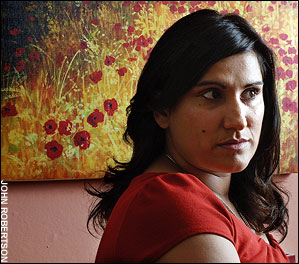 Although I can think of one commenter that may be angered, but Jasvinder Sanghera has just honored with the “Pride of Britain” award for her pioneering work.
Although I can think of one commenter that may be angered, but Jasvinder Sanghera has just honored with the “Pride of Britain” award for her pioneering work.
44-year-old Sanghera was instrumental in forcing the British government to take effective steps against forced marriages. The Foreign and Commonwealth Office now has a Forced Marriage Unit (FMU) which receives about 5,000 calls a year from victims. About 65 per cent of the cases the Unit deals with are Pakistani Muslims, 30 per cent are minors and 15 per cent are boys or men. Every year, the Unit helps bring back to Britain about 400 people trapped in forced marriages overseas.[link]
Tragedies have a way of uniting people. As did 1984 for Sikhs. In the 25 years since, divisions have again formed in the panth. But a great new initiative in Toronto is asking people to put aside the differences that keep us apart and unite in remembering 1984. [Hat tip: Mapleleaf Sikh]

A few weeks ago I attended the Sikh Education Conference hosted by the Sikh Research Institute that brought together educators from across North America. One of the presentations focused on the importance of language education. The presenter made it quite clear – teaching young children multiple languages does not confuse them or hinder their development. In fact, research has shown that bilingualism and multilingualism is advantageous in several aspects. Exposure to two or more languages increases critical thinking skills, creativity, and flexibility of the mind in young children.
According to neurobiologists, the human brain is “hardwired” to learn languages as an infant and toddler. Any language learned during this period is stored, literally, in a different part of the brain than language acquired later in life, and in the right environment young children can learn up to four languages without significant slowdown. [link]
It seems, however, than in immigrant communities there is often hesitation around raising children in multilingual homes. The fear is that children will not learn English fast enough which will pose an obstacle to their assimilation into American society. It happens in our own community – young Punjabi children not being able to communicate with their older Punjabi grandparents. There is a language gap and if we consider the importance of oral tradition in our history – you can just imagine how much information is not being communicated and in fact being lost between generations.
Despite tanks rolling into the Guru’s Court (Darbar Sahib)
When a Singh’s head, becomes hunted as a sport (Delhi 1984)
Despite Kaljug sitting on his throne supreme
When the world trembles from tyranny’s regime
And Still We Will Fight
Although hardly a newsflash, last week a Delhi Court acquitted three murderers. Although low-level players in the Government-sponsored pogroms in Delhi and throughout India in November 1984, their acquittal further illustrates that it is Kaljug that reigns supreme in India.
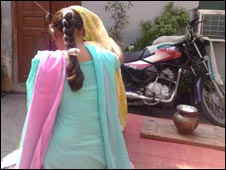 One of our goals on The Langar Hall is to raise awareness about issues affecting our community around the globe. Whether or not we identify or relate to these specific issues may not be as important as much as the acknowledgement that these issues do occur and that individuals and families and even children are affected. We hope that by raising awareness we can begin, as a community, to stand up against injustice in all its forms.
One of our goals on The Langar Hall is to raise awareness about issues affecting our community around the globe. Whether or not we identify or relate to these specific issues may not be as important as much as the acknowledgement that these issues do occur and that individuals and families and even children are affected. We hope that by raising awareness we can begin, as a community, to stand up against injustice in all its forms.
A recent article from the BBC reports that, according to campaigners in Punjab, British Asians are hiring contract killers to carry out up to 100 murders in India each year. One of the most well known cases is that of Surjit Athwal, a British Sikh woman who disappeared in Punjab in 1998. Eventually it was revealed that she had been murdered in a so-called honor killing after her in-laws discovered that she planned to divorce her husband. They had hired criminals in India to kill her. She was strangled and her body dumped in a river. Her brother, Jagdeesh Singh, now campaigns for other victims’ families.
“I think Surjit’s case exposed for the first time in this country overseas outsourced killings. How the Punjabi community, settled in Britain, send their females back to the land of origin, in the full knowledge that they can have them murdered easily, swiftly and efficiently.” [link]
 Jasmeet Kaur Sidhu is a 21-year-old aspiring journalist, who currently writes a climate blog for the Toronto Star (she even has The Langar Hall listed as one of her links!). She was recenly chosen as one of the Top 10 College Women for Glamour Magazine (hat tip: Maple Leaf Sikh). The award is usually given out to college students in the US, however, Jasmeet (a Canadian) was picked to be part of the group this year!
Jasmeet Kaur Sidhu is a 21-year-old aspiring journalist, who currently writes a climate blog for the Toronto Star (she even has The Langar Hall listed as one of her links!). She was recenly chosen as one of the Top 10 College Women for Glamour Magazine (hat tip: Maple Leaf Sikh). The award is usually given out to college students in the US, however, Jasmeet (a Canadian) was picked to be part of the group this year!
Jasmeet is the founder of the Peel Environmental Youth Alliance (PEYA), a network of students in the Peel Region working to implement environmental programs in all 220 Peel Region schools. She is currently studying Peace and Conflict Studies at the University of Toronto. Her dream is to become an international journalist.
As a sophomore, Sidhu wrote to the Toronto Star suggesting ways for the paper to improve its coverage. She was promptly asked to join the Community Editorial Board—the youngest member ever—and soon started writing opinion columns for the Star, Canada’s largest newspaper. Sidhu, whose family moved from Malaysia to Canada when she was a baby, has covered everything from HIV/AIDS in Africa to climate change. As the peace and conflict major says, “My mother used to deliver the Star when we first came to Canada. Now her daughter writes for the very same newspaper. Amazing, right?!”
 I was nervous. It was my first day on the job as a crisis hotline volunteer. Although I had just completed weeks of rigorous training on how to handle all types of calls – from anxiety, to depression, domestic abuse, and the dreaded suicide – I was still a little uneasy.
I was nervous. It was my first day on the job as a crisis hotline volunteer. Although I had just completed weeks of rigorous training on how to handle all types of calls – from anxiety, to depression, domestic abuse, and the dreaded suicide – I was still a little uneasy.
I met my mentor for the evening, an elderly white woman who lived in a suburb not too far from me. We made small talk, then she turned to her Danielle Steel novel, and I started thumbing through my training manual – both of us awaiting the next call.
Almost immediately, the phone rang.
“This one’s yours, kid” my mentor said.
I took one deep breath and picked up the phone. Apparently, there hadn’t been one for months, but sure enough, my first call was a suicide. Even though we spent an extensive amount of time covering this topic in training, I instantly froze up.
I placed the caller on speaker and my mentor immediately took over.
What happened over the next 30 minutes will stay etched in my memory for the rest of my life. The caller was severely depressed about a health condition he had been battling since he was a child and – to make a long story short – while on the call, he had the dangerous combination of the means and a motivation to end his life.
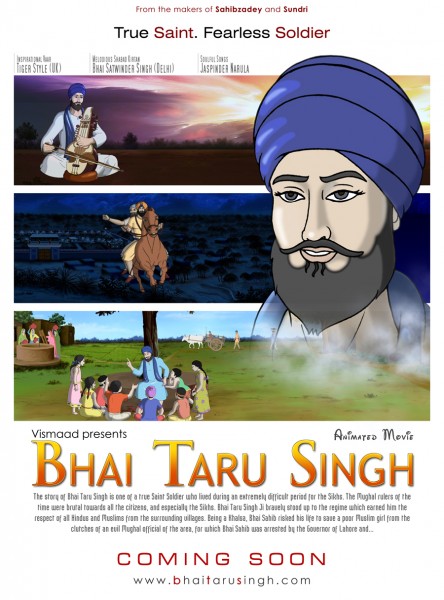 babania kehania put saput karaen ||
babania kehania put saput karaen ||
The stories of one’s ancestors make the children good children.
(Guru Amar Das, Raag Raamkalee, Page 951 of Guru Granth Sahib)
The American writer Muriel Rukeyser once said that the universe is made up, not of atoms, but of stories. This especially holds true for the Sikh universe. Stories or anecdotes from our short but action-packed history provide us with guidance, inspiration and resilience. Who needs fictional super-heroes when the Sikh narrative provides us with so many real-life heroes who did extraordinary things?
For most Sikhs, myself included, these Sikh stories told to us by our parents and grandparents were an essential part of growing up Sikh. However, we’re quickly losing this great oral tradition. For a variety of reasons, parents and grandparents aren’t telling sakhis like they used to and kids aren’t listening to them.
Continue Reading »
 The California legislator has unanimously passed a Kirpan Education Bill (AB 504) through both houses (Assembly & Senate); it is now headed to Governor Schwarzenegger’s desk. This bill, carried by Assemblymember Warren Furutani (D-Long Beach) and other co-sponsors, will only become law if the California Governator signs off on it. AB 504 is a historic bill because it is the only piece of legislation in America that focuses on Sikhs and our kirpan. Furthermore, the bill is being pushed through the law-making process in California-a state with the oldest and largest number of Sikhs in America.
The California legislator has unanimously passed a Kirpan Education Bill (AB 504) through both houses (Assembly & Senate); it is now headed to Governor Schwarzenegger’s desk. This bill, carried by Assemblymember Warren Furutani (D-Long Beach) and other co-sponsors, will only become law if the California Governator signs off on it. AB 504 is a historic bill because it is the only piece of legislation in America that focuses on Sikhs and our kirpan. Furthermore, the bill is being pushed through the law-making process in California-a state with the oldest and largest number of Sikhs in America.
The Kirpan Education Bill (AB 504) requires that all California law enforcement officers be trained on Sikhs and our kirpan. This training would teach California law enforcement officers about Sikhs and the importance of our religiously mandated articles of faith. Sikhs wearing a kirpan are often disrespectfully approached by law enforcement officers and arrested for concealed weapons charges. Often law enforcement officers will pull Sikhs over for minor traffic violations or safety concerns and as soon as officers see the kirpan the situation is escalated into a criminal offense; although the Sikh was only practicing his/her faith. These officers are unaware that the kirpan is a religious mandated article of faith-a gift from our Guru that we wear with care, respect, and love.
In many ways, the Punjabi-Sikh art scene is expanding exponentially these days. Just 10 years ago, beyond major, mainstream singers, I don’t think there was an arts scene, except maybe in people’s homes. Today, there are film festivals in most major cities like Spinning Wheel and the upcoming Sikh Heritage Film Fest in NY, art exhibits in museums such as the recent exhibit at NY’s Rubin Museum and current exhibit at the London’s Victoria and Albert, and even spoken word shows like When Lions Roar and Lahir. There are independent artists writing thoughtful lyrics, creating original beats, and giving some of our community’s concerns a voice. One of my favorites from this summer is Humble the Poet’s “Singh with Me” featuring Sikh Knowledge.
Yet, while the number and modes of art and artists grows in our community, many mainstream musicians are following  mainstream trends… videos featuring flashy cars rented for the shot, women as props, all at some party. Maybe they’re catering to what they think the audience wants, but the audience is clamoring for what they see as glamorous… which is manufactured to cater to the whims of the audience. This degenerative, downward spiral has led to recent hits such as RDB’s “Om Mangalam.” (See end of post.)
mainstream trends… videos featuring flashy cars rented for the shot, women as props, all at some party. Maybe they’re catering to what they think the audience wants, but the audience is clamoring for what they see as glamorous… which is manufactured to cater to the whims of the audience. This degenerative, downward spiral has led to recent hits such as RDB’s “Om Mangalam.” (See end of post.)
RDB is clearly identifiable as Punjabi-Sikh (let’s not talk about who’s a good or bad Sikh- that’s boring), wearing the now fashionable Palestinian support scarf, and singing Om Mangalam in this video on the homepage of their official site. This is definitely a case of trying to do too much and doing it all badly. There’s nothing inherently wrong with being Punjabi, singing Hindi music (while wearing a Palestinian support scarf), in a video with meaningless lyrics. It’s just not art. Some might call it entertainment, though I’d call it a train wreck.
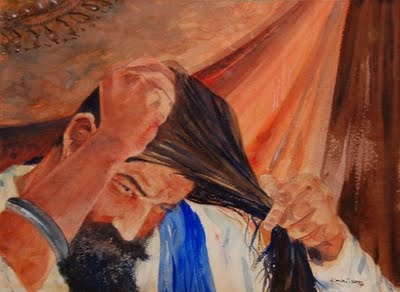 A few weeks ago, while at the park with my family, an elderly woman dressed in a sari came over to say hello. After a brief introduction, she said to us “wait here for a second” and called out “Alex…come here!” A little boy with light skin and brown hair ran over to us. The lady in the sari bent down and said to Alex, “See…this is what your grandfather looked like. He wore a turban and had a long beard just like him.” Alex wasn’t quite sure what to make of it, but he forced a quick smile and ran back to the swings.
A few weeks ago, while at the park with my family, an elderly woman dressed in a sari came over to say hello. After a brief introduction, she said to us “wait here for a second” and called out “Alex…come here!” A little boy with light skin and brown hair ran over to us. The lady in the sari bent down and said to Alex, “See…this is what your grandfather looked like. He wore a turban and had a long beard just like him.” Alex wasn’t quite sure what to make of it, but he forced a quick smile and ran back to the swings.
As a dastaar-wearing Sikh, I come across these interactions quite often – some pleasant, some not-so-pleasant, and some downright awkward. But because they happen so often, I tend to brush it off and forget all about them quickly. For some reason, this incident stuck with me.
It made me think about the days in Gurmat camp decades ago when the Uncles would scare us in to keeping our kesh or else keshdari Sikhs would become a “thing of the past” and “only be seen in museum exhibits.” I never bought that theory, but the incident in the park did shake me a bit.
Although Sikhi is such a large part of my life, truth is…I really don’t think about kesh much. As a matter of fact, when I lead presentations about Sikhi to Sikhs or non-Sikhs, I make a point to downplay the kesh aspect. Not that it is any less important than any of the other kakaars, but with non-Sikhs, the “mystery” behind the kesh seems to overtake discussions, and we miss some of the most important and central tenets of the faith…equality, self-less service, self-realization, and universality of the message. And even with Sikhs, kesh is made such a focus that many in our community feel that as long as we retain the external image of a Sikh, the rest of maryada and discipline does not apply. It is essentially a “free-pass” and gives us the right to criticize those who do not keep their kesh.
Blogged by: Amritpan
 For many years UNICEF India has attempted to survey and document the declining sex ratio and female feticide in India. And for many years the government of India has maintained that Punjab (and thus Sikhs) consistently registered the highest number of ‘kuri maar’ cases, as compared to states such as Haryana, Himachal, Rajasthan, and Gujarat. So when a Punjabi doctor took the stage at United Nation’s Geneva Conference and dared to question the validity of the government’s survey methods, she was met with a ruthless legislative backlash so typical of Bharat’s political response to its human rights advocates that it almost doesn’t even prompt a second glance.
For many years UNICEF India has attempted to survey and document the declining sex ratio and female feticide in India. And for many years the government of India has maintained that Punjab (and thus Sikhs) consistently registered the highest number of ‘kuri maar’ cases, as compared to states such as Haryana, Himachal, Rajasthan, and Gujarat. So when a Punjabi doctor took the stage at United Nation’s Geneva Conference and dared to question the validity of the government’s survey methods, she was met with a ruthless legislative backlash so typical of Bharat’s political response to its human rights advocates that it almost doesn’t even prompt a second glance.
A renowned, outspoken crusader of women’s rights and a pediatrician at Rajindra Hospital, Patiala, Dr. Harshinder Kaur presented a paper to the Geneva Convention that explicated upon the abject conditions of women in India, disputed female feticide as being a Punjabi cultural phenomenon by asserting that Rajasthan has the highest number of feticides, and challenged India’s injudicious spending of the UN’s funds, urging that the UN redirect this monetary support to specialized NGOs.
Last week a Punjabi Sikh cab driver suffered a gruesome act of hate in the middle of the night in the Bay Area. He was called “Bin Laden”, a “terrorist”, and someone who had come to this country to kill Americans. His attackers where white males working professional jobs in real-estate. Not your stereotypical attackers, but committing a very typical act of hate. Although, the attackers posted bail with their money; the injured cab driver can not work to provide for his family.
We have laws to protect the attackers, but who is protecting the taxi-cab driver? How is it possible that assaulting a taxi cab driver is not a felony in every American city? Taxi cab drivers have one of the most dangerous jobs because of the environments in which they transport clients and how money for service is exchanged. They never know the character of the person they are picking up or if he/she will have enough money to pay. They function off the assumption that they won’t be attacked and their client will pay them. Otherwise, they could not make a profit in this business. They can’t let their fear overtake them.
At a recent conference, “Driving For The Future”, a taxi cab workers alliance in the Bay Area called United Taxi Cab Workers, announced that they are working towards a bill of rights. The Asian Law Caucus is working closely with this group. The bill of rights would demand, for example, that attackers suffer more severe penalties and there be a safety-net of benefits to help cab drivers who have been assaulted. In an industry employing large number of immigrant men who are not fluent in English; the need to legally protect taxi-cab drivers’ rights is very important. We need to encourage Punjabi Sikh taxi cab drivers to participate in this alliance to make sure their needs are protected.
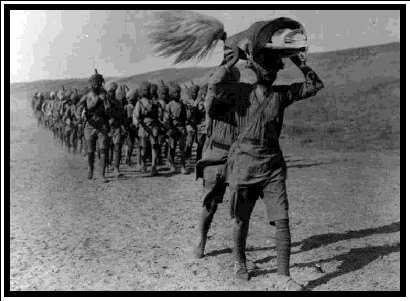 In honor of yesterday’s Gurpurab (Bhadon 17, Nanakshahi) marking the anniversary of the first installation of Guru Granth Sahib Ji Maharaj in the Darbar Sahib, I’d like to share a piece I had written for sikhchic.com at the culmination of last year’s “300 Saal” celebrations, titled “My Guru & I: In His Presence.”
In honor of yesterday’s Gurpurab (Bhadon 17, Nanakshahi) marking the anniversary of the first installation of Guru Granth Sahib Ji Maharaj in the Darbar Sahib, I’d like to share a piece I had written for sikhchic.com at the culmination of last year’s “300 Saal” celebrations, titled “My Guru & I: In His Presence.”
As 2008 comes to an end, I’ve been reflecting on all the “300 Saal” celebrations of the year. It was an inspiring year – and the discussion, speeches and sheer emotion of this milestone really gave me a chance to reflect on the role of the Guru in my life.
While volunteering at Gurmat camps, I always made a point to pose a question to the children, prior to leading them in to their first divan: “If you walked into this Gurdwara and instead of the Guru Granth Sahib being there, say it was Guru Nanak, or Guru Amar Das or Gur Tegh Bahadur, sitting there – how would you act?” How would you carry yourself when walking in? Would your mind-set be any different? Would your muthha tek take on a different meaning? Would you be more attentive and alert during the divan? Would you be more eager to listen to his words and try harder to understand him?
Guru Ram Das says:
Baani Guru Guru Hai Baani Vich Baani Amrit Saarey
Bani is the Guru and Guru is the Bani. And it’s within this Bani, that Amrit is found.
Thus, the Shabad (“The Word”) is, was and always will be the Guru. History tells us that even during Guru Arjan’s time, the Granth (then referred to as the Pothi Sahib because it was yet to be completed and anointed Guru), was the center of the congregation, the center of the Darbar, even in the presence of Guru Arjan himself.
The saakhis tell us that Guru Arjan had so much reverence for the Pothi Sahib that he kept it on an pedestal elevated even from himself, and joined the Sikhs in paying obeisance to it. This tells me that it is not the person, the attire or the physical attributes that make the Guru; instead, it is the Shabad. But we call the ten physical forms (from Nanak to Gobind Singh) Guru because they were the living manifestation of that Shabad.
They lived the Shabad. We sing it, they lived it.
I found this video of the Miss World Punjaban 2008 contest interesting because the contestant chose to highlight her Sikh identity that is intimately linked to Punjabi culture. I find that it is easy for us to “intellectually” talk about the separation of the two identities. However, for many, being Sikh and Punjabi are intimately connected. They mutually exist-one does not envision oneself without the other.
Ms. Gurpreet Kaur Khaira from Canada chose to highlight this co-existence of the two identities in the talent portion of the contest. She performs dhadi vaar, while wearing a simple white suit and kessari chunni.
Who is Miss Punjaban and what does she look like varies … there is not only one notion of Punjabi “beauty” or identity … at least in this beauty contest! You can sing dhadhi vaar in simplicity or a Punjabi song in a bright red chunni and kokaa.
(FAST-FORWARD TO 1:44 to see Ms. Gurpreet Kaur Khaira from Canada)

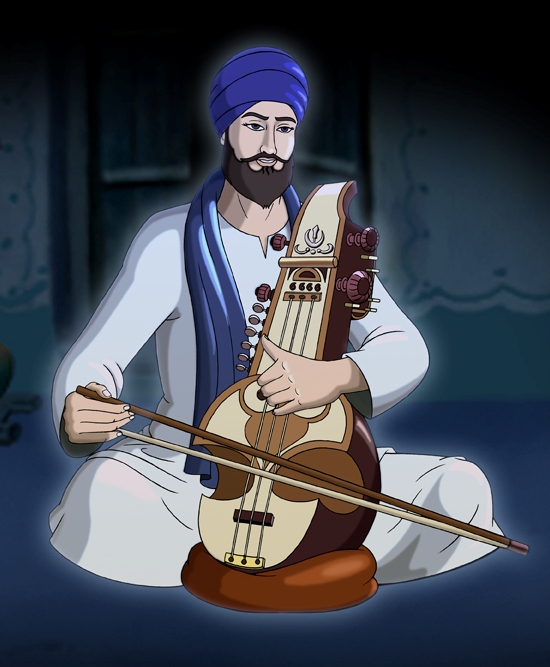 For those of you who enjoyed Vismaad Productions’ work with Sahibzadey, Rise of the Khalsa and Sundri, there is now a new animated movie to look forward to this fall. Bhai Taru Singh: True Saint. Fearless Soldier, is the latest production and will be premiering around the world over the next few months. The film’s website provides a description of the film,
For those of you who enjoyed Vismaad Productions’ work with Sahibzadey, Rise of the Khalsa and Sundri, there is now a new animated movie to look forward to this fall. Bhai Taru Singh: True Saint. Fearless Soldier, is the latest production and will be premiering around the world over the next few months. The film’s website provides a description of the film,
The story of Bhai Taru Singh is one of a true saint soldier who lived during an extremely difficult period for the Sikhs. The mughal rulers of the time were brutal towards all citizens, and especially the Sikhs. Bhai Taru Singh Ji bravely stood up to the regime which earned him the respect of all Hindus and Muslims from the surrounding villages. [link]

